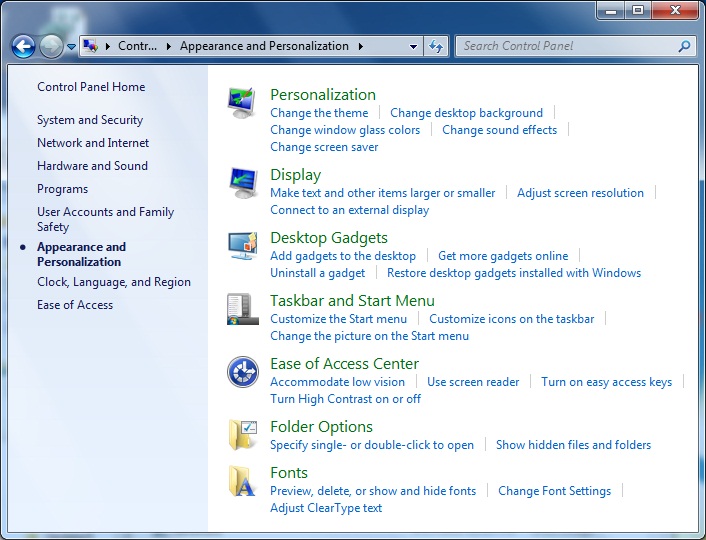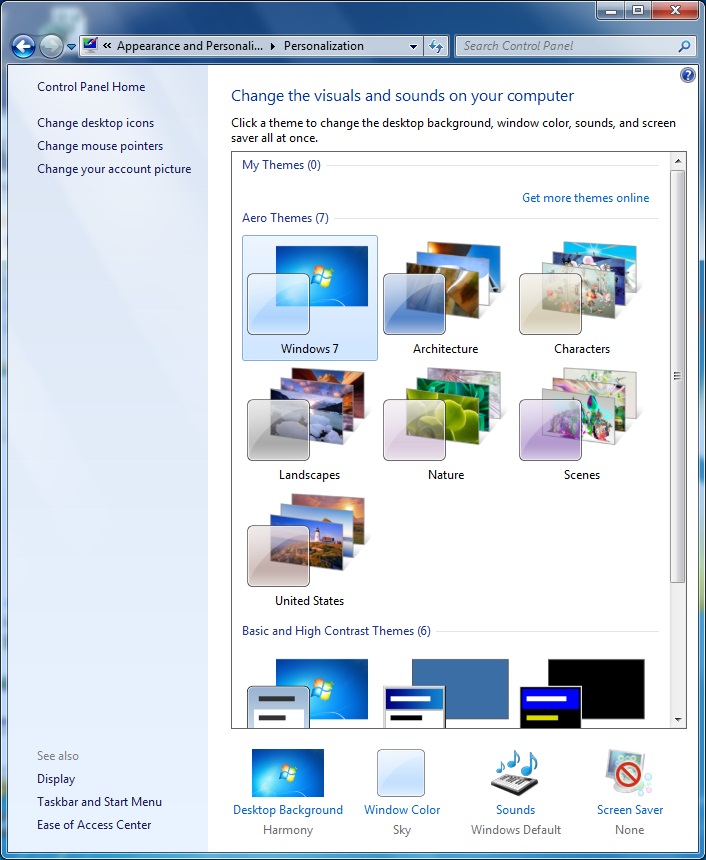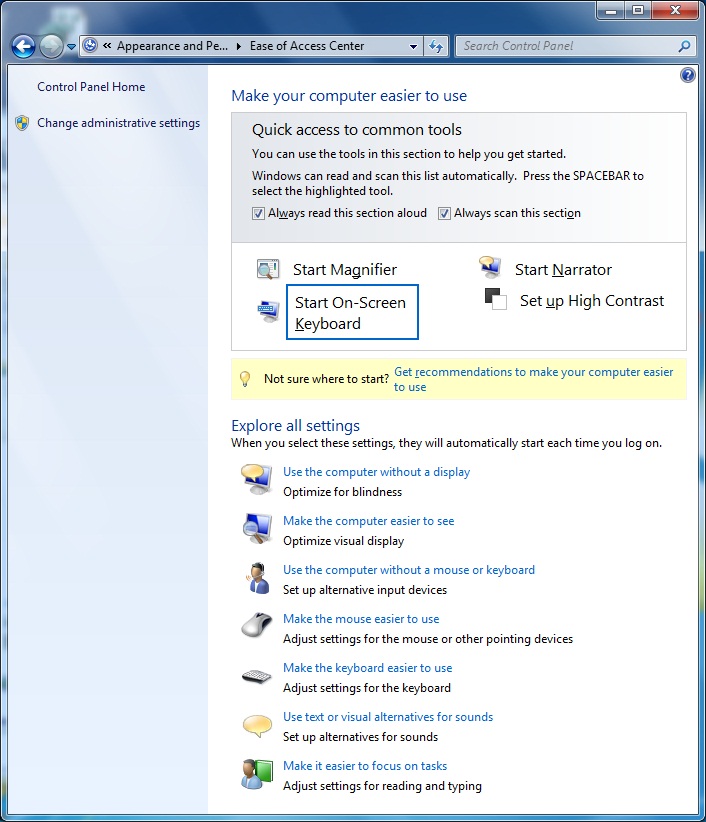Using the System Utilities
Control Panel Overview
Appearance and Personalization
- The Appearance and Personalization category lets you modify the user interface for Windows 7. Modifying the user interface lets you maximize your
productivity by configuring Windows 7 to behave the way you prefer. For example, you can configure Windows Explorer to display folder contents as a list by default instead of icons.

- The applets in the Appearance and Personalization category include:
- Personalization: It gives you links to adjust themes, color schemes, the desktop background, screen saver, sound effects, and mouse pointers. Themes are preconfigured
collections of visual and sound elements such as mouse pointers, startup sounds, and windows colors. Color schemes control the color of windows and menus. You can personalize
the desktop background by selecting a picture included with Windows 7 or using one of
your own. The screen saver settings include options such as how long the computer is idle
before displaying a screen saver and whether authentication is required to exit the screen
saver. The sounds conf guration allows you to def ne the sounds associated with Windows
events.

- Display: It gives you links to adjust the screen resolution, calibrate color, change display settings, adjust ClearType text, and set a custom text size.

- Desktop Gadgets

- Taskbar and Start Menu: It is used to configure the behavior of the taskbar and Start menu. The Taskbar tab lets you conf gure how the taskbar displays information, such as
auto-hiding the taskbar customizing the notif cation area. The Start Menu tab lets you customize
detailed options about how the Start menu looks, the power button action, and choose whether recently opened programs appear in the Start menu. The Toolbars tab lets you conf gure which
toolbars are displayed on the taskbar, such as Address, Links, and Tablet PC Input Panel.

- Ease of Access Center: It is used to make Windows 7 easier to use.

- Folder Options: It lest you configure the display and behavior of Windows Explorer. The General tab lets you configure whether opening a new folder opens a new window, and
whether you need to single-click or double-click to open an item. The View tab has many settings, such as whether to show hidden files, whether to hide system files, and whether to show file
extensions for known file types. The Search tab lets you configure settings for search including
whether file contents and subfolders are searched from Quick Search, whether partial matches
are performed, whether natural language search is used, and how nonindexed files are searched.

- Fonts: It lets you manage fonts that are installed in Windows 7. You can install new
fonts, view the properties of existing fonts, or remove fonts. There are also links to change font
size and configure ClearType.

Activity 3-4







